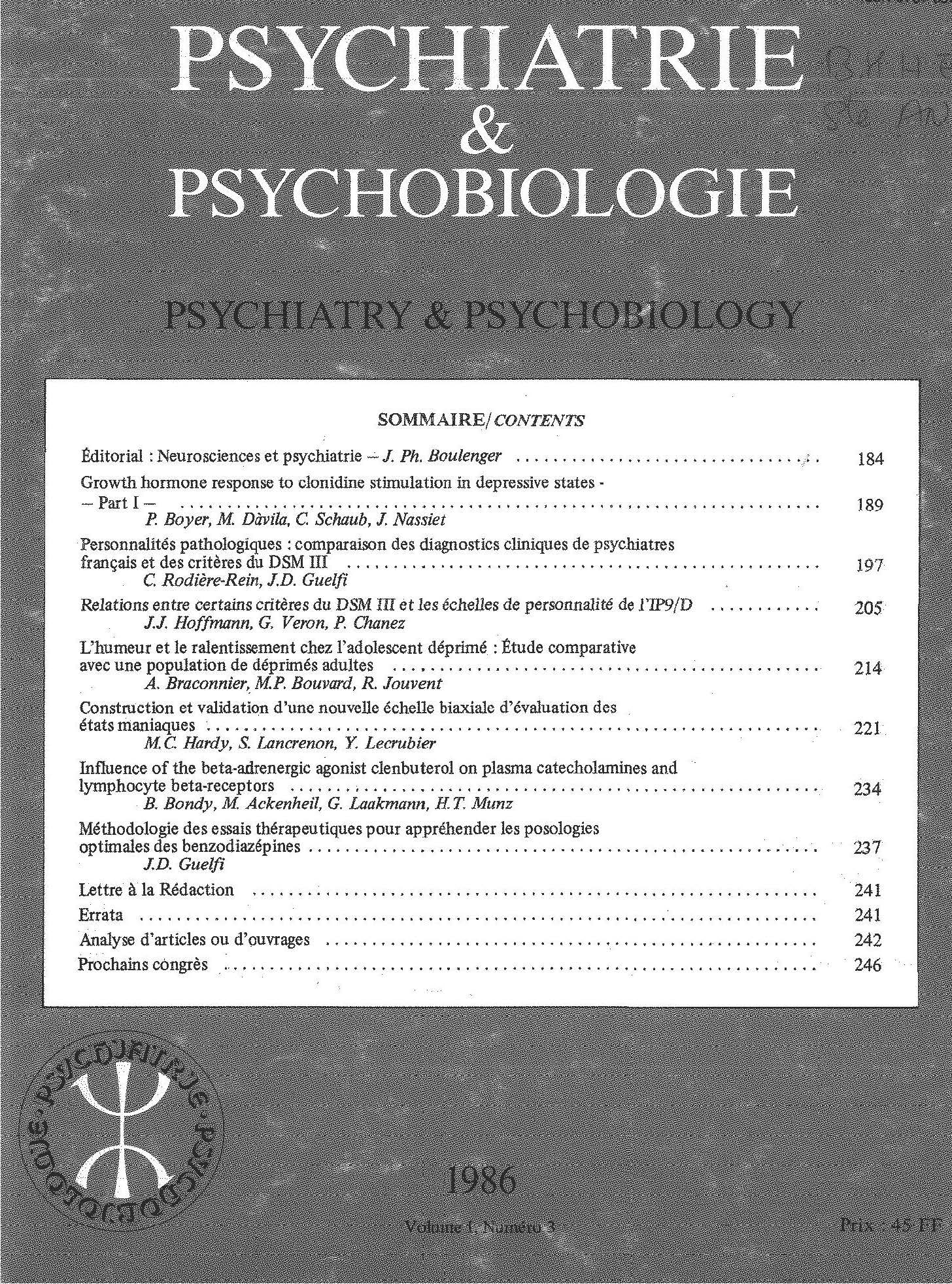No CrossRef data available.
Article contents
The Kinetic and Dynamic Characteristics of Benzodiazepines in the Treatment of Anxiety
Published online by Cambridge University Press: 28 April 2020
Summary
Benzodiazepines are assumed to cause drowsiness and sedation. Rating scales such as the Massachusetts General Hospital Sedation Scale and the Morning Evaluation of Drug Induced Sedation Scale allow testing of this hypothesis and assessment of the effects of benzodiazepines. We performed a five-week study of prazepam in 63 anxious outpatients. Plasma levels of desmethyldiazepam were assessed weekly. Placebo was given the first week, followed by active drug for three weeks, and placebo the final week. One group received prazepam 30 mg/h, the other received prazepam 10 mg three times per day. Drowsiness-sedation and anxiolytic efficacy were assessed at baseline and weekly. Plasma desmethyldiazepam levels were similar in both treatment groups. Efficacy was profound in both groups. Drowsiness-sedation measured high at baseline and decreased significantly (P=0.05) over the 3 weeks when active drug was administered. Sedation decreased by as much as 40%. Sleep was improved with prazepam, and this may have resulted in decreased drowsiness. We conclude that anxious outpatients have significant levels of drowsiness-sedation and that treatment with benzodiazepines reduces the occurrence of this symptom.
Résumé
Les benzodiazépines sont censées provoquer une somnolence et une sédation. Des échelles d’évaluation telles que la Massachusetts General Hospital Sedation Scale (échelle de sédation du Massachussets General Hospital) et la Morning Evaluation of Drug Induced Scale (échelle d’évaluation matinale de la sédation due à l’action des médicaments) permettent de vérifier cette hypothèse et de mesurer les effets des benzodiazépines. Nous avons étudié les effets du prazépam pendant une période de 5 semaines sur 63 patients de consultation externe. Les niveaux plasmatiques de deméthyldiazépam furent mesurés chaque semaine. On administra un placebo la première semaine, suivi d’un médicament actif pendant trois semaines et, enfin, d’un placebo durant la dernière semaine. Un groupe reçut 30 mg de prazépam à l’heure du coucher tandis que l’autre groupe recevait 10 mg de prazépam trois fois par jour. La somnolence et la sédation, de même que l’efficacité anxiolytique furent évaluées au point de départ et chaque semaine. Les niveaux plasmatiques de deméthyldiazepam étaient semblables dans les deux groupes de traitement. L’efficacité était très bonne dans les deux groupes. La somnolence et la sédation étaient élevées lors de l’évaluation initiale, puis elles ont diminué de manière significative (P = 0,05) au cours des trois semaines d’administration du médicament actif. La sédation a diminué dans une proportion allant jusqu ’à 40%. Le prazépam eut des effets bénéfiques sur le sommeil, ce qui contribua peut-être a réduire la somnolence. Nous concluons que les patients anxieux de consultation externe ont des niveaux importants de somnolence et de sédation et que le traitement aux benzodiazépines réduit la fréquence de ce symptôme.
Keywords
- Type
- Research Article
- Information
- Psychiatry and Psychobiology , Volume 3 , Issue S2: Aspects cliniques et cognitifs de l'anxiété Paris, 28 Janvier 1988 , 1988 , pp. 175s - 182s
- Copyright
- Copyright © European Psychiatric Association 1988



Comments
No Comments have been published for this article.